The Monastery of Batalha was built to commemorate the victory of the Portuguese over the Castilians in 1385. The construction started in 1388 and lasted two centuries. The Monastery of Batalha was the main church of the monarchy of Portugal for two centuries. It is built of ochre limestone and decorated with numerous elaborate sculptures. The monastery of Batalha is one of the great masterpieces of the Flamboyant-Gothic and Manueline styles in Portugal. The English Gothic style, also known as the Perpendicular style, also has influenced the art and architecture of the monastery. The Founder's Chapel was built in 1426-1434, the chapel houses the tombs of King João I, his Queen Consort Philippa of Lancaster and the tombs of four of their sons, including the tomb of their most famous son Prince Henry the Navigator. The square Chapter House is 19 metres long on each side. The huge Gothic vault of the Chapter House is remarkable for having no central supports, a daring concept at the time. The monastery has a few stained glass windows dating from 1514. The Unfinished Chapels remain as a testimony of the fact that the monastery was never completely finished because in the beginning of 16th century, the attention of the monarchs of Portugal was strongly focused on another great architectural masterpiece, the Monastery of the Hieronymites in Lisbon. The Monastery of Batalha is one of the Seven Wonders of Portugal and is a main historic destination in Portugal. The Monastery of Batalha gained status as a UNESCO World Heritage in 1983.
www.werelderfgoedfotos.nl © Copyright World Heritage Photos Classic Car Road Trip
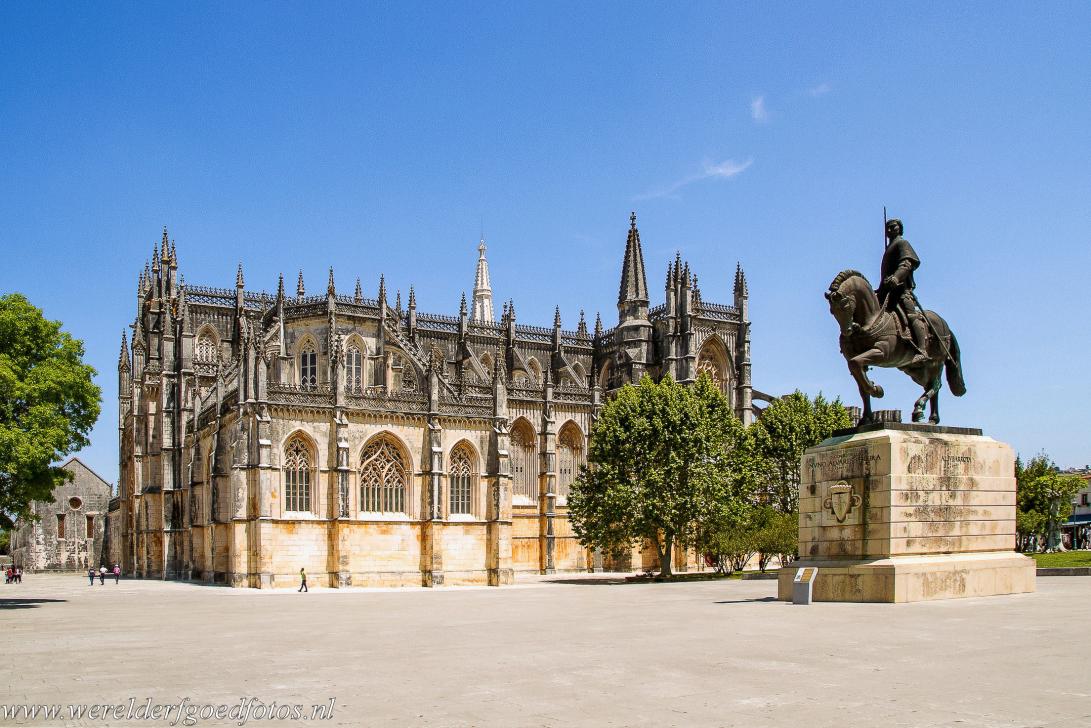
The Monastery of Batalha was built to commemorate the victory of the Portuguese over the Castilians in 1385. The Monastery is one of the masterpieces of the Flamboyant-Gothic and the Manueline styles in Portugal. The construction of the Monastery of Batalha started in 1388 and lasted two centuries. The monastery was the main church of the Portuguese monarchy for two centuries. The Monastery of Batalha gained the status as a UNESCO World Heritage in 1983.

The Monastery of Batalha was built to commemorate the victory of the Portuguese over the Castilians in 1385. The Monastery is one of the masterpieces of the Flamboyant-Gothic and the Manueline styles in Portugal. The construction of the Monastery of Batalha started in 1388 and lasted two centuries. The monastery was the main church of the Portuguese monarchy for two centuries. The Monastery of Batalha gained the status as a UNESCO World Heritage in 1983.
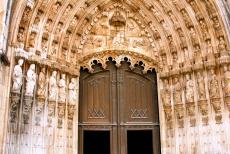
Monastery of Batalha: The main portal is decorated with statues of the apostles, angels, saints and Old Testament Kings, one of the apostles is standing on a chained devil. In the center of the tympanum is the figure of God seated on a throne. The main portal is an unique piece of art in the Flamboyant-Gothic and Manueline styles. The Monastery of Batalha was built of limestone from the nearby village of Porto de Mós, the limestone turned pale ochre in the course of time.
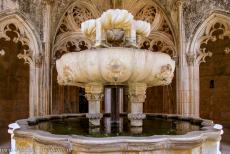
The English Gothic style, also called the Perpendicular style, has influenced the architecture of the Monastery of Batalha. The Gothic lavabo dates from 1450. The sculpted lavabo stands in the northwestern corner of the Claustro Real, the Royal Cloister. The lavabo has a fountain and two smaller basins above. The lavabo, the cloister fountain, was used for the ceremonial washing of the hands.The monastery has a few stained glass windows dating from 1514.
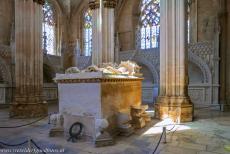
Monastery of Batalha: The Founder's Chapel contains the marble tombs of King João I and his Queen Consort Philippa of Lancaster, surrounded by the tombs of four of their sons, including the tomb of their most famous son Prince Henry the Navigator. The Founder's Chapel was built between 1426 and 1434. The chapel was the first royal mausoleum to be built in Portugal. The Founder's Chapel is octagonal in shape.
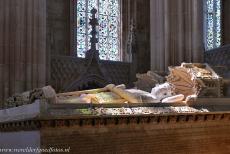
The sun shines through the stained glass windows of the Founder's Chapel of the Monastery of Batalha, the chapel is bathed in the coloured light of the windows. The medieval stained glass windows creates a beautiful and vibrant palette of colours on the marble tombs of King João I and his wife Queen Philippa of Lancaster. The Founder's Chapel was built in a beautiful blend of the Flamboyant-Gothic style and the English Gothic style, also known as the Perpendicular style.
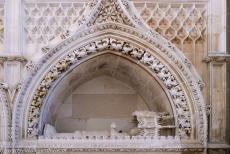
Monastery of Batalha: The sculpted tomb of Prince Henry the Navigator (1394-1460) is situated in the Founder's Chapel. Although he was neither a sailor nor navigator, the Portuguese prince sponsered a great deal of voyages of discovery along the west coast of Africa and the Madeira Islands. The Founder's Chapel is an octagonal structure with stained glass windows and roofed with a star vault, lit by an octagonal lantern.
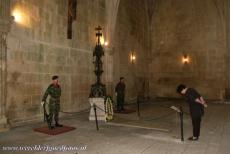
Monastery of Batalha is: The Sala do Capítulo is the Chapter House of the monastery. Now, two soldiers stand guard at the tomb of two Unknown Soldiers, killed in World War One. The square Chapter House is 19 metres long on each side. The gigantic Gothic vaulted ceiling is remarkable for having no central supports, a very daring concept at the time. The Portuguese name of the Monastery of Batalha is: Mosteiro de Santa Maria da Vitória Batalha.
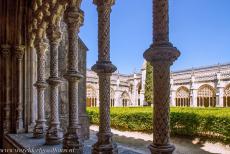
Monastery of Batahlha: The colonnettes of the courtyard are decorated with flowers, shells, pearls and spiral motives. The courtyard is surrounded by cloisters, such as the King Alfonso V Cloister. The Monastery of Batalha is one of the Seven Wonders of Portugal and a main historic destination in Portugal. The Monastery of Batalha was inscribed on the UNESCO World Heritage List in 1983.
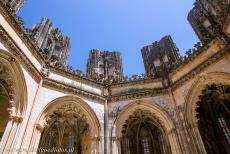
Monastery of Batalha: The Unfinished Chapels are also known as the Pantheon of King Duarte. The Unfinished Chapels, Capelas Imperfeitas, were never covered with a roof and remain open to the sky until today. The Monastery of Batalha was never completely finished because in the beginning of 16th century, the attention of the Kings of Portugal was focused on another great masterpiece, the Monastery of the Hieronymites in Lisbon, also a UNESCO World Heritage.
